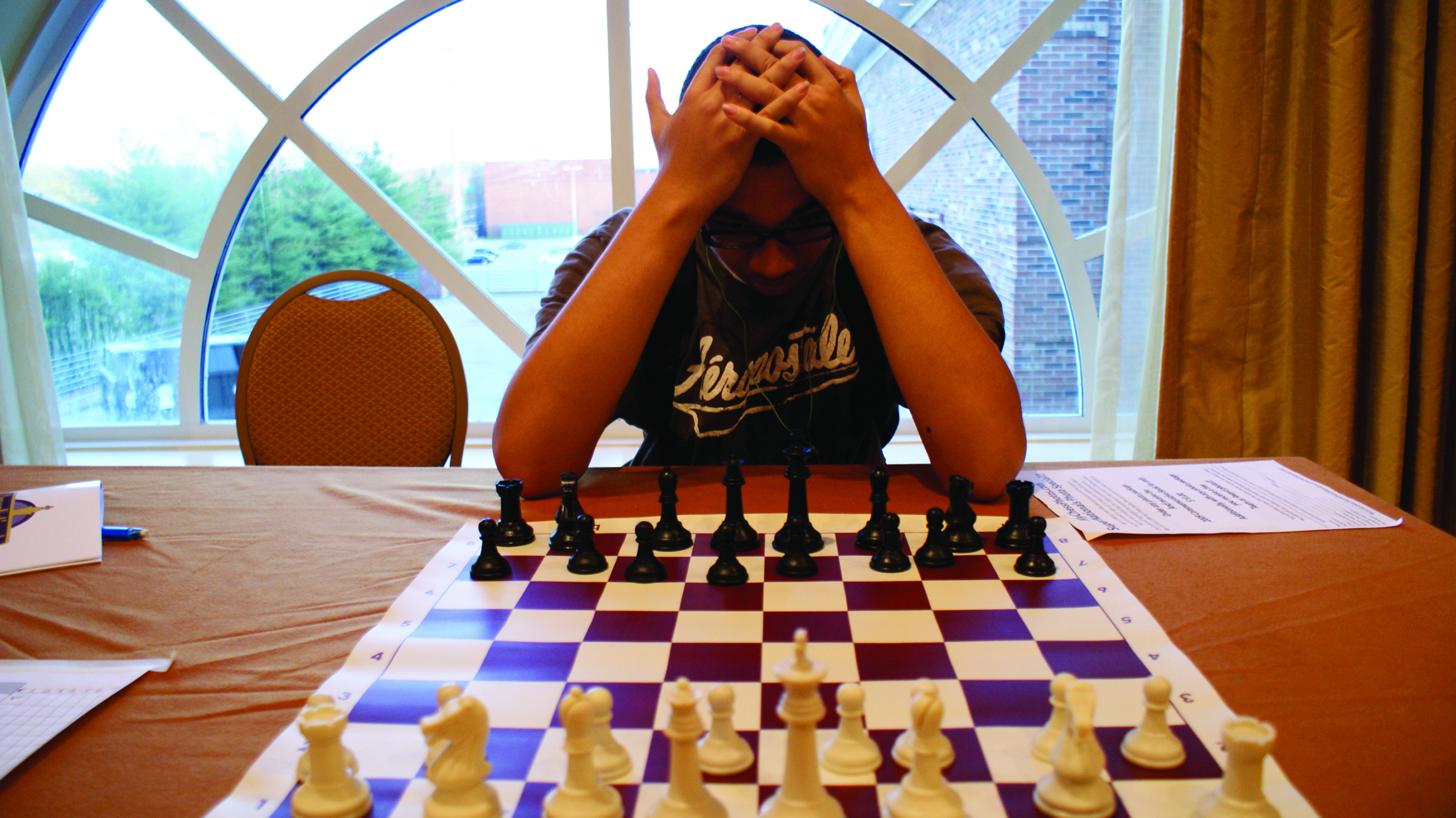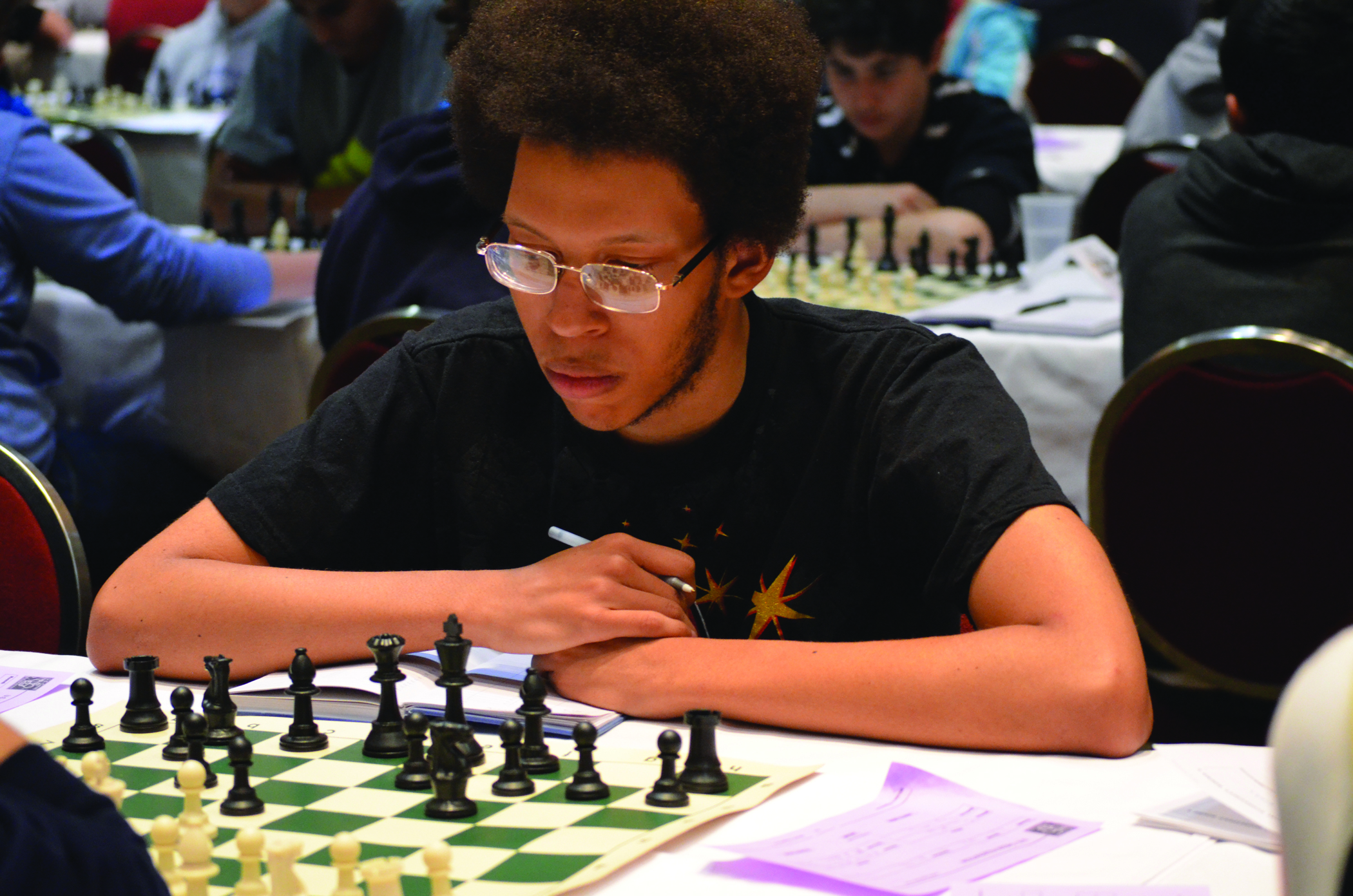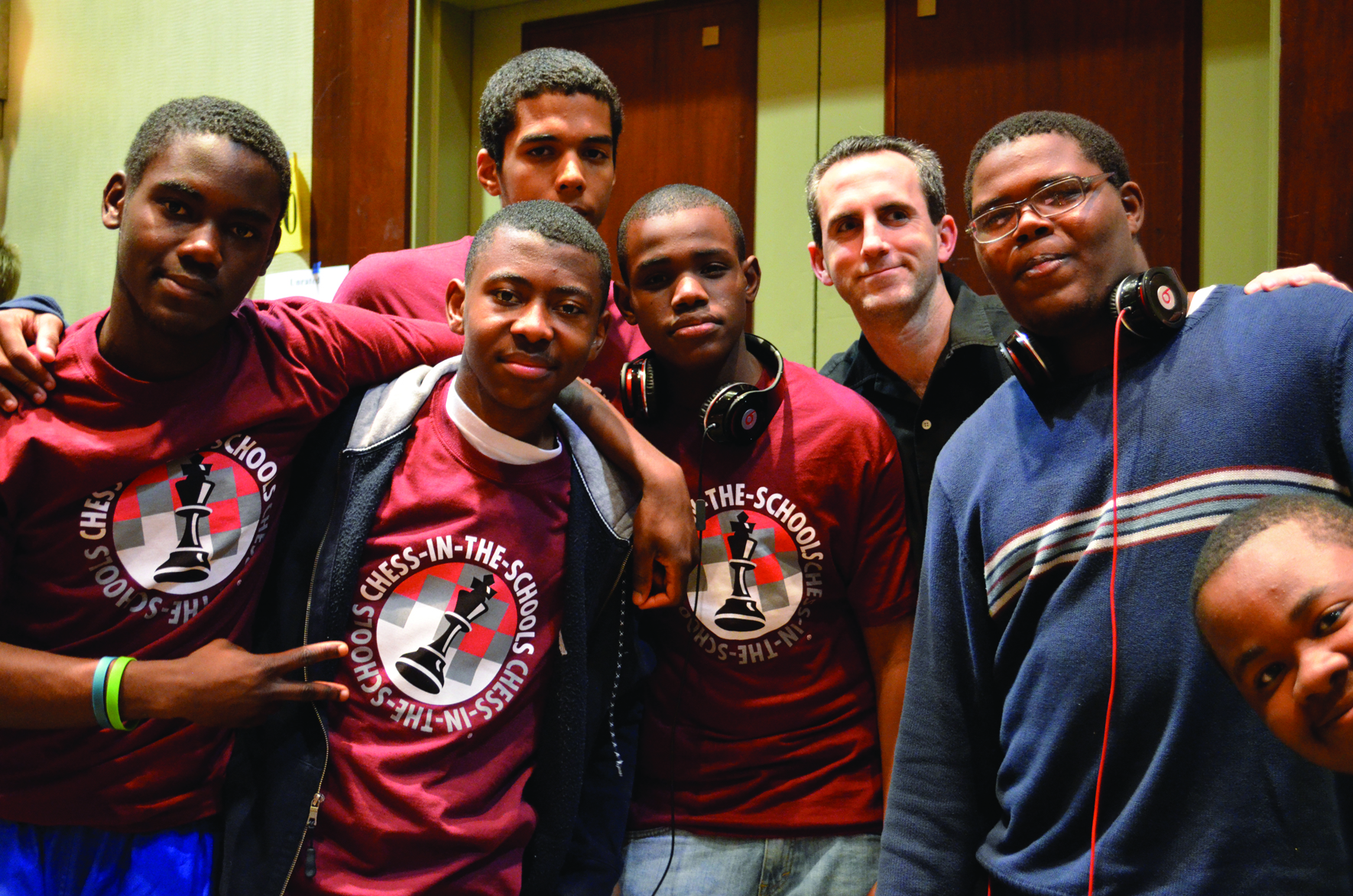Program is much more than tournaments and trophies; it helps low-income youth get into college.

After several months of chess instruction, he eventually did go on with his teammates to win first place in a national chess championship, as well as second place as an individual in the same tournament.
But soon after Guzman got involved with the chess program at his school, he discovered it was about much more than winning tournaments and trophies.
“Once I joined, they started giving us college seminars and providing us opportunities for community service and to go to [cultural] events,” Guzman said. “It was so many things that would help in the future.”
The activities Guzman described came by way of College Bound, a program offered through Chess-in-the-Schools, a New York City-based nonprofit that brings chess lessons and tournaments to 32 elementary schools and 18 middle schools in mostly low-income neighborhoods throughout Manhattan, The Bronx, Brooklyn and Queens, reaching approximately 13,000 students.
Chess-in-the-Schools also has provided trainings and helped set up scholastic chess programs in cities from Miami to San Francisco.
Chess-in-the-Schools has gotten a lot of attention for its involvement with several schools that have won national titles, including Intermediate School 318, the school featured in the recently-released chess documentary “Brooklyn Castle,” as well as Middle School 118 and Public School 70, both of The Bronx.
But agency officials prefer to stress the organization’s work in getting young people from high-poverty areas into college, particularly selective colleges that they might not otherwise consider.
Much more than chess
“On occasion, schools do reach great heights in terms of chess,” said
Since 1986, Chess-in the-Schools has worked with more than 400,000 young people and has achieved considerable success in getting its participants into college.
Consider the fact that only about five out of 10 high school graduates from low-income families immediately enroll in college, according to the U.S. Department of Education. But among College Bound participants, the college enrollment rate during the past three years has been 96 percent. And in 2012 it was 100 percent, according to agency officials.
Perhaps those odds-defying numbers best explain why Chess-in-the-Schools officials prefer to emphasize the agency’s college prep work as opposed to how many national titles its member schools have won.
“The goal is not to produce high-rated chess players — that is an added benefit if it happens,” Hugo said. “The goal is to give all students an opportunity to learn and grow through chess. Chess is the vehicle we use to develop our young minds.”
The College Bound program comprises about one-third of CIS’s annual $2.9 million budget. The organization relies on funds from individuals, foundations, corporations and city government, and participating schools pay a “partner fee” to cover a small portion of the costs to have the program in their schools, according to Hugo.
“Chess is the tool we use to connect with children,” Hugo said. “But it is the quality of the programming and the relationships that the students form with their chess instructors and Chess-in the-Schools staff that allow us to engage students at a higher level and guide them to college.”
Creating strategies for college

Two coordinators — one for freshmen and sophomores and one for juniors and seniors — comprise College Bound staff, as well as a part-time college adviser who works with juniors and seniors on college essays, financial aid applications, and creating relationships with colleges.
Students are mostly guided toward four-year colleges in upstate New York or out of state.
“We try to get them outside of New York City,” Hugo said. “A lot of kids who stay here get distracted by home life and friends who haven’t gone off to college.”
Chess-in-the-Schools alumni have gone off to MIT, Skidmore, Yale, Wesleyan, Columbia, Union and SUNY Stony Brook, to name a few. Program staff keep close contact with the students even once they go to college. The organization boasts college graduation rates that range from 72 percent to 88 percent among recent cohorts, well above the national average of 55 percent.
“One of the things that sets us apart and makes us so successful is because we’ve cultivated these relationship with students,” Hugo said.
Indeed, for Guzman, now 17, College Bound helped land him this fall at St. Lawrence University, a highly selective college in upstate New York, just south of the Canadian border. U.S. News & World report ranks St. Lawrence as the 53rd best liberal arts college in the nation.
Guzman said was it “very fair” to say that he would not have gotten into St. Lawrence without College Bound.
“I was honestly lost on what college to go to,” said Guzman, who is first in his family to attend a four-year university. He is considering a career in engineering. His mother, who never went to high school, works as a home attendant. His father, whom he sees infrequently, is a cab driver.
Guzman said he came to count on the counseling of Chess-in-the-Schools more than he did his high school guidance counselors, in part because the school-based counselors seemed too busy — a reality that has been well-documented in several recent reports, such as the 2010 Public Agenda report, “Can I Get a Little Advice Here? How an Overstretched High School Guidance System is Undermining Students’ College Aspirations.”
“They did help, but I couldn’t go to them because honestly I didn’t know them as well,” Guzman said of the guidance counselors at his school. “They would usually be really busy. They were good counselors … but I didn’t feel like I could rely on them. I would rather go to Chess-in-the-Schools.”
Hugo said going to college is a way for students to “change the course of their life.”
“It’s not just about having a better life and more money,” Hugo said. “It’s about being your own captain, and that’s what education can allow you to do.”
The organization’s continuity and mentoring is what other youth-development organizations can learn from the Chess-in-the-Schools model.
Students start in the program in either third or sixth grade, see the same adults from Chess-in-the-Schools from one to three times per week during the course of the year, every year.
“So by the time students come to College Bound, we have a solid three- to six-year relationship with them,” Hugo said. “These consistency and mentoring elements cannot be overstated.”
Hugo also emphasized the fact that agency workers spend a lot of time working with students on an individual basis. “Really knowing our students and their strengths and weaknesses is critical in helping them succeed,” Hugo said. “There is nothing robotic or assembly line-like about our programming — it is all about meeting students where they are at and guiding them to become engaged citizens.”\
See related post “Adviser Pushes Students to put Life Stories on Paper.”
Photos courtesy of Chess-In-The-Schools.
Jamaal Abdul-Alim is a Washington, D.C.-based freelance writer.His work has appeared in The Milwaukee Journal Sentinel.





























